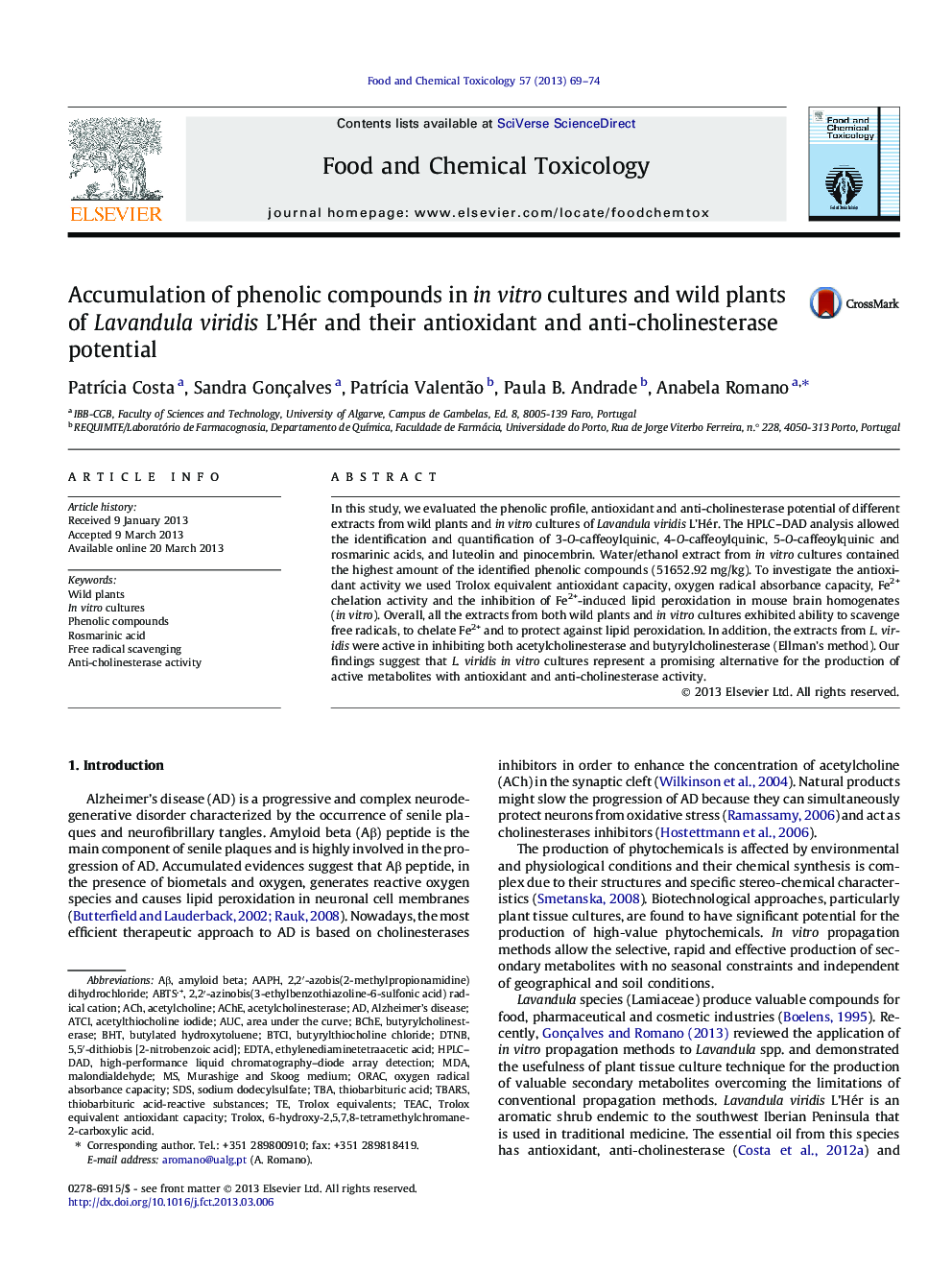| Article ID | Journal | Published Year | Pages | File Type |
|---|---|---|---|---|
| 5852078 | Food and Chemical Toxicology | 2013 | 6 Pages |
â¢Phenolic compounds in wild plants and in vitro cultures of L. viridis extracts.â¢In vitro cultures accumulate high amounts of rosmarinic acid.â¢L. viridis metabolites have antioxidant and anti-cholinesterase activities.â¢The extraction solvent influences the recovery of phenolic compounds and biological activity.
In this study, we evaluated the phenolic profile, antioxidant and anti-cholinesterase potential of different extracts from wild plants and in vitro cultures of Lavandula viridis L'Hér. The HPLC-DAD analysis allowed the identification and quantification of 3-O-caffeoylquinic, 4-O-caffeoylquinic, 5-O-caffeoylquinic and rosmarinic acids, and luteolin and pinocembrin. Water/ethanol extract from in vitro cultures contained the highest amount of the identified phenolic compounds (51652.92Â mg/kg). To investigate the antioxidant activity we used Trolox equivalent antioxidant capacity, oxygen radical absorbance capacity, Fe2+ chelation activity and the inhibition of Fe2+-induced lipid peroxidation in mouse brain homogenates (in vitro). Overall, all the extracts from both wild plants and in vitro cultures exhibited ability to scavenge free radicals, to chelate Fe2+ and to protect against lipid peroxidation. In addition, the extracts from L. viridis were active in inhibiting both acetylcholinesterase and butyrylcholinesterase (Ellman's method). Our findings suggest that L. viridis in vitro cultures represent a promising alternative for the production of active metabolites with antioxidant and anti-cholinesterase activity.
